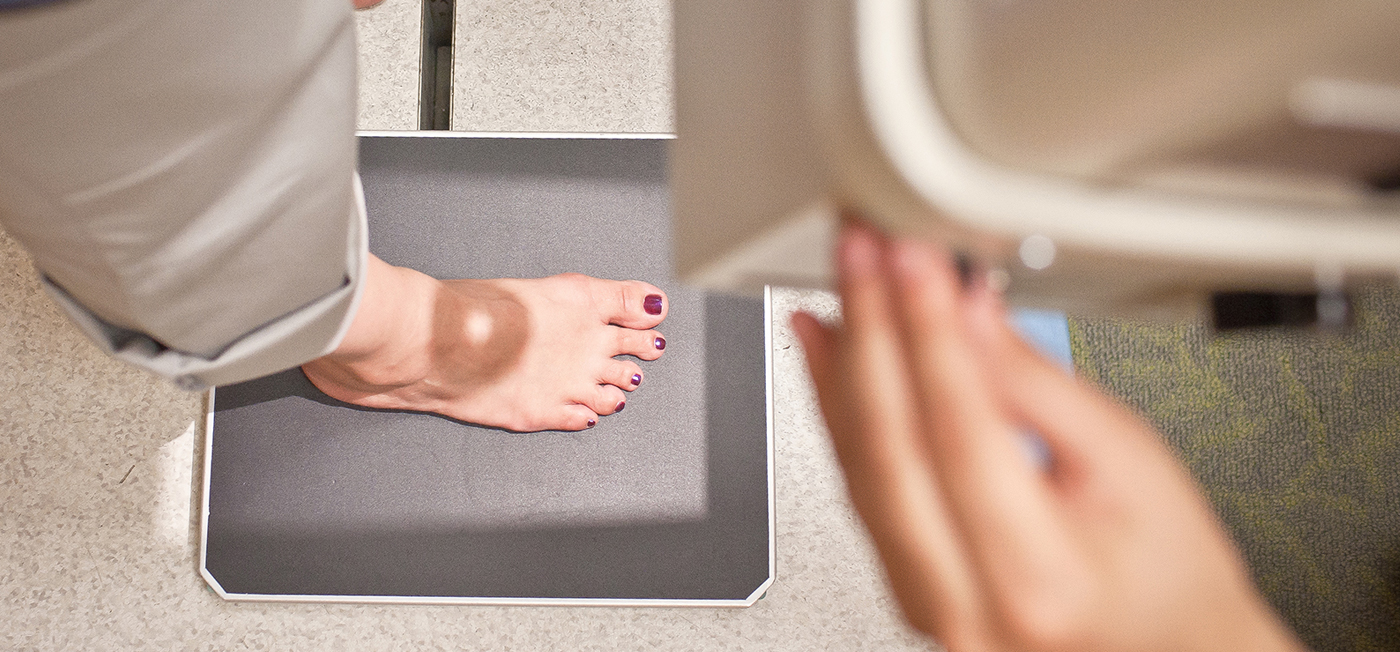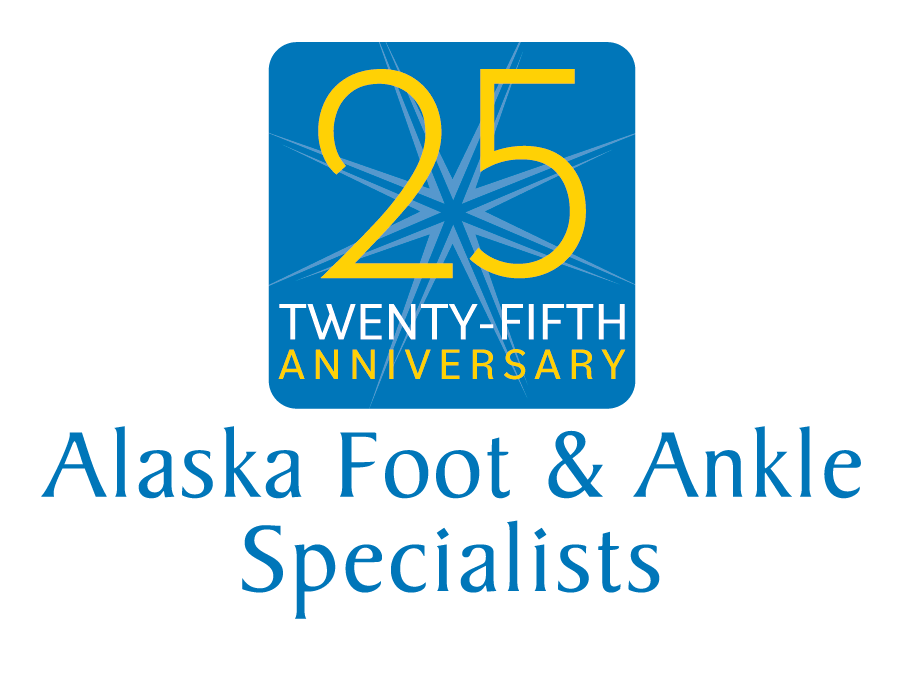
Frequently Asked Questions (FAQs)
Alaska Foot & Ankle Specialists (AFAS) is an entire clinic dedicated exclusively to diseases and conditions of the foot and ankle. Whatever your condition, the providers at AFAS have the training and experience to provide a solution.
Below is an interactive list of frequently asked questions or FAQs. Click each question to learn more:
- After operation, how do I cut and loosen my bandage?
- After operation, how do I cut and loosen my splint?
- How do I put a walking boot on?
- What is a podiatrist?
- What is a bunion?
- What causes heel pain?
- What are stress fractures?
- What is Morton’s neuroma?
- What is an ingrown toenail?
- What is a plantar wart?
- What is flatfoot?
- What are foot and ankle surgeons?
- What education has a foot and ankle surgeon received?
- What is a board-certified foot and ankle surgeon?
- What are the American College of Foot and Ankle Surgeons?
- What problems do foot and ankle surgeons treat?
A podiatrist, also known as a podiatric physician or foot and ankle surgeon, is a doctor devoted to the study, diagnosis and medical treatment of disorders of the foot, ankle and lower extremities.
A bunion (also referred to as hallux valgus) is often described as a bump on the side of the big toe. But a bunion is more than that. The visible bump actually reflects changes in the bony framework of the front part of the foot. The big toe leans toward the second toe, rather than pointing straight ahead. This throws the bones out of alignment—producing the bunion’s bump.
Often, heel pain is caused by plantar fasciitis, which is an inflammation of the band of tissue (the plantar fascia) that extends from the heel to the toes. In this condition, the fascia first becomes irritated and then inflamed. Heel pain could result from a number of other causes, however, including tendonitis of the Achilles tendon or a fracture.
Stress fractures are tiny, hairline breaks that can occur in bones. Stress fractures in the bones of the feet can be caused by over training or overuse, improper training habits or surfaces, improper shoes, flatfoot or other foot deformities, or osteoporosis. These tiny breaks can lead to a complete break if left untreated.
A neuroma is a thickening of nerve tissue that may develop in various parts of the body. The most common neuroma in the foot is a Morton’s neuroma, which occurs between the third and fourth toes. It is sometimes referred to as an intermetatarsal neuroma. Intermetatarsal describes its location in the ball of the foot between the metatarsal bones. Neuromas may also occur in other locations in the foot.
When a toenail is ingrown, it is curved and grows into the skin, usually at the nail borders (the sides of the nail). This digging in of the nail irritates the skin, often creating pain, redness, swelling and warmth in the toe.
A wart is a small growth on the skin that develops when the skin is infected by a virus. Warts can develop anywhere on the foot, but typically appear on the bottom (plantar side) of the foot. Plantar warts most commonly occur in children, adolescents and the elderly.
Flatfoot is often a complex disorder, with diverse symptoms and varying degrees of deformity and disability. There are several types of flatfoot, all of which have one characteristic in common: partial or total collapse (loss) of the arch.
Other characteristics shared by most types of flatfoot include toe drift, in which the toes and front part of the foot point outward. The heel tilts toward the outside and the ankle appears to turn in.
Other, related conditions may develop as a result of flatfoot, including bunion, hammertoe and a tight Achilles tendon, which causes the heel to lift off the ground earlier when walking and may make the problem worse.
Foot and ankle surgeons are the surgical specialists of the podiatric profession. They provide complete medical and surgical care for a variety of conditions that affect people of every age.
After completing undergraduate education, a foot and ankle surgeon completes the four-year curriculum at an accredited podiatric medical school, graduating with the degree of Doctor of Podiatric Medicine (DPM). Although identical in length to programs at medical schools for osteopathic doctors (DOs) and medical doctors (MDs), and covering basic and clinical sciences, the podiatric medical school curriculum also provides intensive focus on conditions of the foot and ankle.
After graduation from podiatric medical school, the foot and ankle surgeon enters a post-graduate residency in podiatric medicine and surgery approved by the Council on Podiatric Medical Education. These residencies are similar to, and are often integrated with, residencies for MDs and DOs, and provide training in general medicine, general surgery, and surgical specialties. The critical difference is the higher volume of cases and time focused on the foot and ankle in residency programs for a podiatric surgeon.
Currently, the majority of podiatric residency programs are three years in length. After completing his or her residency, a foot and ankle surgeon may receive additional training in specific areas of foot and ankle surgery through fellowships.
The intensive process leading to certification by the American Board of Foot and Ankle Surgery (ABFAS) includes four years of post-doctoral clinical experience, completion of an approved residency, a large number of surgeries representing a diverse range of foot and ankle surgical procedures, and successful completion of extensive written and oral examinations.
ABFAS is recognized by the Joint Committee on the Recognition of Specialty Boards of the Council on Podiatric Medical Education.
Foot and ankle surgeons who have achieved certification by ABFAS are eligible to become Fellows of the American College of Foot and Ankle Surgeons (ACFAS). This 7,200-member specialty medical society provides continuing medical education programming to its members and serves to educate patients and consumers about foot health and the conditions that foot and ankle surgeons treat.
Foot and ankle surgeons provide comprehensive medical and surgical care for a wide spectrum of foot and ankle conditions, including common to complex disorders and injuries that affect people of all ages.
They are uniquely qualified to detect the early stages of diseases that exhibit warning signs in the lower extremities, such as diabetes, arthritis and cardiovascular disease, and they manage foot conditions that may pose an ongoing threat to a patient’s overall health.

